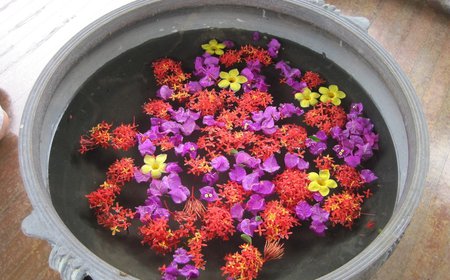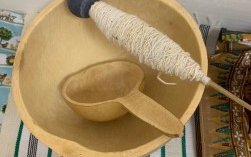In this series of blog posts from the researcher-artists working in the MIDEQ Hub we will begin introducing some concepts from traditions outwith those which are more normally associated with the discourse of migration studies or intercultural communication in the academic literature.
Since the arrival of wax prints from Europe and the Far East on the shores of Africa, we have developed a taste for it, gone as far as adopting, naming the wax prints and incorporating it into our culture. In West Africa, specifically Ghana, wax prints are very important and significant to people from all walks of life. We characteristically express ourselves with wax prints, not only for their vibrant colours and comfort, but as a tool of communication and self-expression.
By distinction, there is generally a straight connection between the name and message that often embodies the visual image in the design. The traditional silk textile (kente) which is woven on a loom and the stamped funeral cloth (adinkra) convey messages based on the designs in them. Same can be said for wax prints, which are mostly named after individuals, events, and social messages, including proverbs, making these textiles a non-verbal communicative tool.
An example is this cloth design, ‘Se anomaa entua obua da’.

Some refer to the cloth as ‘Se anomaa entua obua da’, translated as 'The bird that does not fly does not eat’. The bird has always been an important and significant symbol in many cultures in Ghana and across the world. In Ghana the symbol of the bird in this pattern refers to movement, change, prosperity, freedom, migration, taking flight, transition and the fleetingness of riches.
In the course of human evolution, human beings have always been on the move in search of greener pastures. Whereas people migrate across continents, some migration happens within the confines of a country. This phenomenon has not changed but rather increased for some of these common reasons, economic migration, conflicts and family reunion.
The bird is seen as a symbol of progress. The literal and simple meaning of ‘Se anomaa entua obua da’ is one which must move to make progress in life when there is a family that relies on you, it is important that they are provided for. It is true that if one does move to look for work and earn income, then their wealth may increase. Finally, when the wealth is made one does not have rest, hence 'Sika Wo Ntaban', meaning money or wealth has wings.
In our work on South-South migration, and especially looking at inequality, we can see that this proverb and cloth carry meanings with them that express the idea of a corridor in a different way. They also change the discourse of ‘migration drivers’ or ‘push/actors’ translating these into other idioms. It is proverbial advice, a reminder that money or the wealth acquired will not be there forever, so the work must go on — because the moment the work is stopped, the money or the wealth acquired will be used, and if there is no income then the money or the wealth will be depleted.
How does the concept of 'Se anomaa entua obua da', or 'The bird that does not fly does not eat', fit with your experiences of South-South migration and your own traditions? Do you also have textiles that tell migration stories? What would be your word or expression for this idea in your own languages? ‘The early bird catches the worm’? Do you have birds who are especially associated with migration creatures or journeys in times of need? How have such birds been represented in the arts?



